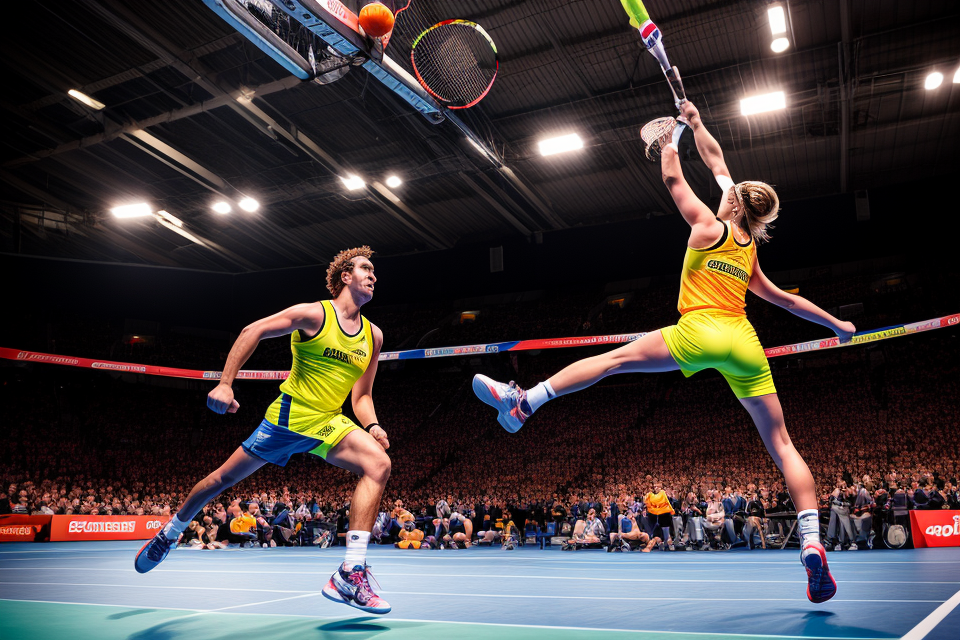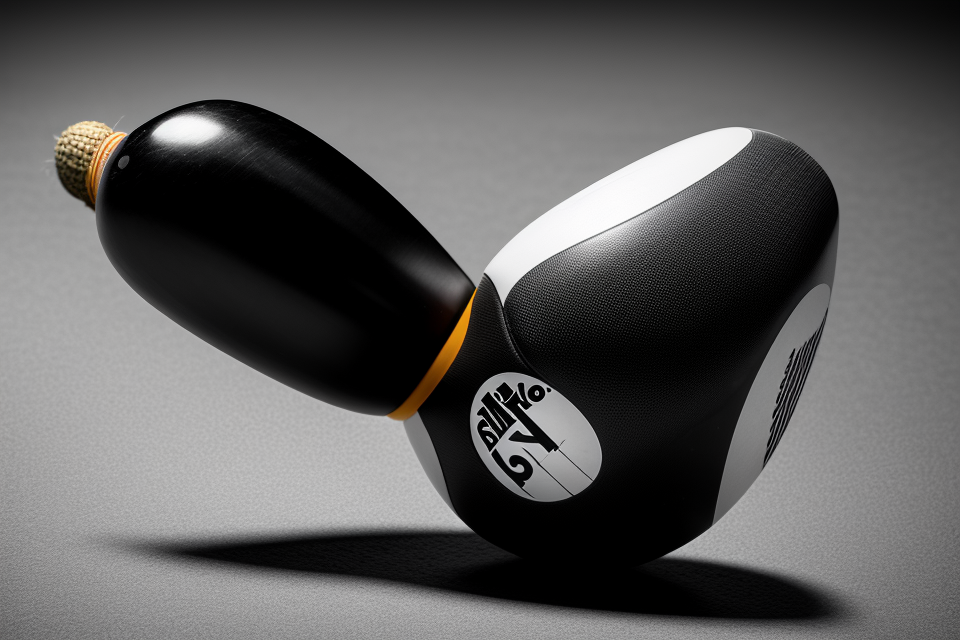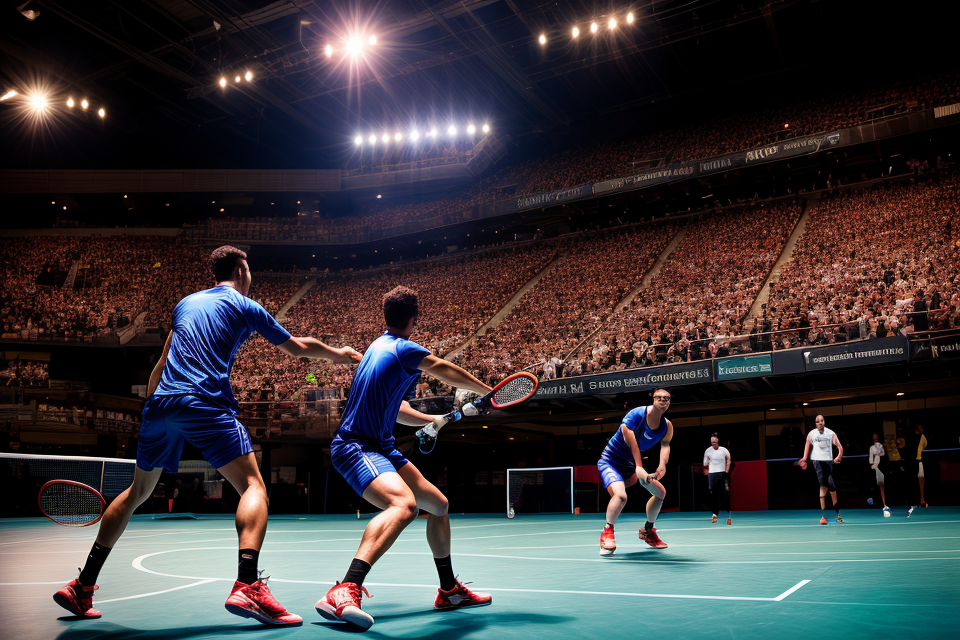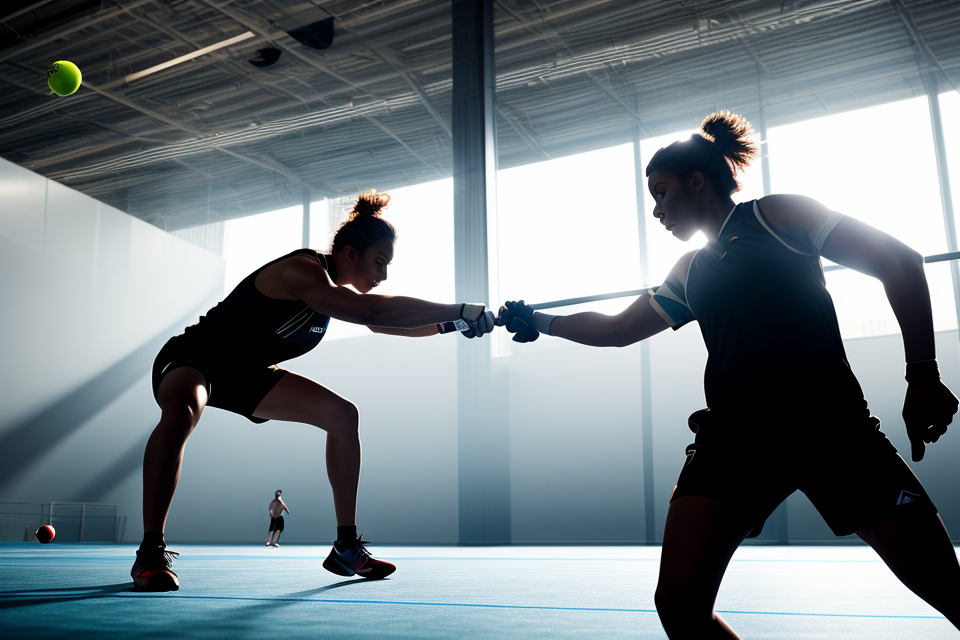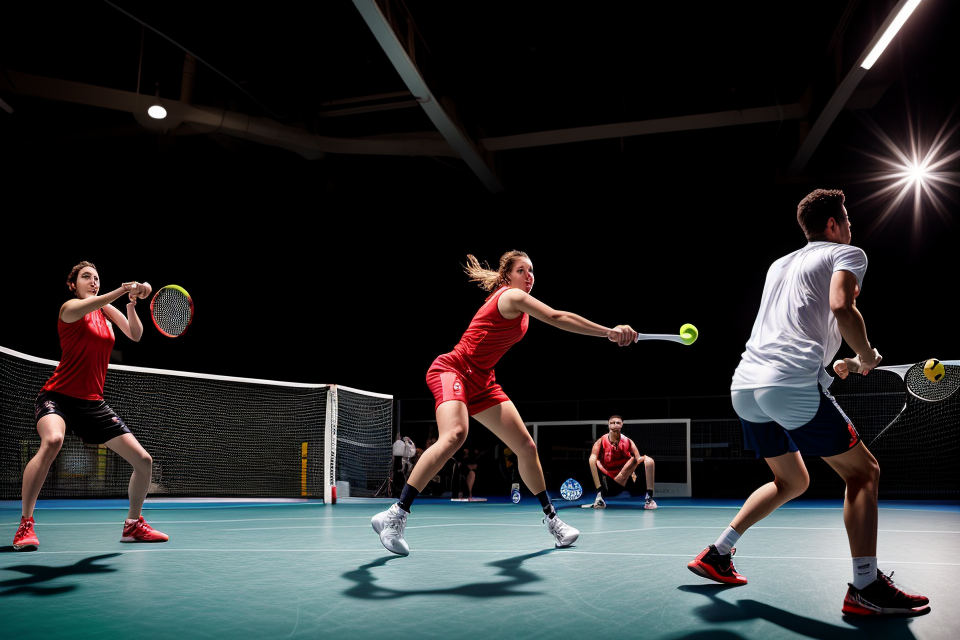Squash is a fast-paced and challenging sport that requires both physical and mental prowess. Mastering your squash shots is crucial to success on the court. In this article, we will explore strategies and tactics for improving your squash shots. From the basics of proper technique to advanced tactics, we will cover everything you need to know to take your game to the next level. Whether you’re a beginner or an experienced player, this article will provide valuable insights and tips to help you improve your squash shots and achieve success on the court. So, let’s get started and discover how to master your squash shots!
Understanding the Fundamentals of Squash Shots
Grip and Stance
The Correct Grip for Different Types of Shots
When it comes to mastering your squash shots, having the right grip is crucial. A good grip allows you to control the direction and power of your shots, which in turn allows you to execute a variety of different shots with precision.
There are a few key things to keep in mind when it comes to grip:
- Hold the racket with your dominant hand, placing your thumb on the handle and your other fingers wrapped around it.
- Keep your non-dominant hand close to the racket handle, with your palm facing outwards.
- Place your hands on the racket in a way that allows you to keep your wrists flexible and your elbows bent.
It’s important to note that the grip you use will vary depending on the type of shot you’re trying to hit. For example, a different grip may be needed for a forehand shot than for a backhand shot.
The Importance of a Balanced Stance
In addition to having the right grip, it’s also important to have a balanced stance when hitting a squash shot. A balanced stance allows you to maintain control over your body and your racket, which in turn allows you to hit the ball with precision.
Here are a few key things to keep in mind when it comes to stance:
- Stand with your feet shoulder-width apart, with your weight evenly distributed on both feet.
- Keep your knees slightly bent to maintain flexibility and balance.
- Position your feet in a way that allows you to move quickly and efficiently in any direction.
- Maintain a slight bend in your torso, which will help you stay balanced and maintain control over your body.
By focusing on these key elements of grip and stance, you’ll be well on your way to mastering your squash shots and becoming a more effective player on the court.
Footwork and Positioning
In squash, footwork and positioning are crucial elements that determine the success of a player’s shots. Proper footwork enables a player to move efficiently around the court, position themselves correctly for a shot, and recover quickly to defend against their opponent’s shots. In this section, we will explore the role of footwork in executing shots and the importance of being in the right position to hit the shot.
The Role of Footwork in Executing Shots
Footwork plays a vital role in executing shots in squash. A player’s footwork determines their ability to move around the court quickly and efficiently, position themselves for a shot, and recover from a shot to defend against their opponent’s return. Effective footwork enables a player to move towards the ball and strike it with power and accuracy.
Importance of Being in the Right Position to Hit the Shot
Being in the right position to hit the shot is crucial in squash. The position of a player on the court determines their ability to hit the ball with power and accuracy. A player who is in the right position is able to hit the ball with more power and accuracy, while also being in a better position to defend against their opponent’s shots.
To be in the right position, a player must have a good understanding of the court’s layout and the positions from which they can hit the ball effectively. They must also be able to move around the court quickly and efficiently to reach the ball and position themselves for the next shot.
In addition, a player’s footwork plays a crucial role in positioning themselves for a shot. By moving quickly and efficiently around the court, a player can reach the ball and position themselves in a strong position to hit the shot. Effective footwork enables a player to cover the court quickly, allowing them to reach the ball and position themselves for the next shot.
Overall, footwork and positioning are critical elements of squash shot execution. By mastering these fundamentals, a player can improve their ability to hit the ball with power and accuracy, and defend against their opponent’s shots.
Improving Your Squash Shots: Techniques and Drills
Warm-up and Stretching
- The Importance of a Proper Warm-up
- Warming up is essential for preparing your body for physical activity, particularly in sports like squash where sudden movements and changes in direction are common.
- It increases blood flow to your muscles, boosts your energy levels, and improves your flexibility and mobility, which are crucial for executing proper shots.
- A proper warm-up also helps prevent injuries by preparing your muscles and joints for the physical demands of the game.
- Stretching Exercises Specific to Squash
- Squash-specific stretching exercises target the muscles used in squash, such as the legs, hips, and upper body.
- Examples of stretching exercises include leg swings, hip openers, and arm circles.
- It is important to hold each stretch for at least 15-30 seconds to allow for a sufficient warm-up.
- It is also important to focus on the muscle groups that will be used during the game, such as the legs and core, rather than just the arms.
- Dynamic stretching, which involves movement, is more effective than static stretching, which involves holding a position.
- It is recommended to stretch both before and after playing to prevent injury and improve flexibility.
Basic Shots
Forehand Drive
The forehand drive is one of the most fundamental shots in squash, and it is essential to master this shot to become a proficient player. To execute a forehand drive, start with your non-dominant foot closest to the wall and your dominant foot slightly behind it. Bend your knees and keep your weight on the balls of your feet, with your racket in front of your body. As the ball approaches, move your dominant foot forward and strike the ball with a sweeping motion, keeping your eyes on the ball throughout the shot.
Backhand Drive
The backhand drive is similar to the forehand drive, but it is executed with the opposite hand and foot. To perform a backhand drive, start with your dominant foot closest to the wall and your non-dominant foot slightly behind it. Position your body and racket as you would for a forehand drive, but use your dominant hand to hit the ball. As with the forehand drive, keep your eyes on the ball and use a sweeping motion to hit it with power and accuracy.
Volley
The volley is a shot that is typically hit when the ball is above the height of your eyes, and it is often used when your opponent is out of position. To execute a volley, move your non-dominant foot closer to the wall and your dominant foot back, keeping your weight on the balls of your feet. Hold your racket with both hands and keep your eyes on the ball as it approaches. As the ball reaches its highest point, step into the shot and hit it with a downward motion, using your racket to guide the ball towards your opponent’s weaknesses.
Advanced Shots
Mastering advanced squash shots is essential for taking your game to the next level. These shots require precision, control, and proper technique to execute successfully. Here are some of the most important advanced shots in squash:
Drop Shot
The drop shot is a low-percentage shot that is used to catch your opponent off guard. To execute a drop shot, you should:
- Stand about 10-15 feet from the front wall, depending on your opponent’s position.
- Take a short, controlled swing, using a semi-flat or curveball technique.
- Aim for the front wall, slightly to the side of your opponent’s feet.
- Keep your eyes on the ball and move forward as soon as it hits the wall.
The drop shot is an effective way to gain control of the court and force your opponent off the back wall.
Lob
The lob is a high, soft shot that is used to keep your opponent at the back of the court. To execute a lob, you should:
- Stand near the side wall, about 5-10 feet from the front wall.
- Take a high, soft swing, using a curveball technique.
- Aim for the front wall, slightly above your opponent’s shoulders.
- Move forward as soon as the ball hits the wall.
The lob is a great way to reset the point and gain space on the court.
Boast
The boast is a high, hard shot that is used to take advantage of your opponent’s weak returns. To execute a boast, you should:
- Stand near the back of the court, about 10-15 feet from the front wall.
- Take a high, hard swing, using a straight arm motion.
The boast is a powerful shot that can catch your opponent off guard and put pressure on them to make a good return.
By mastering these advanced shots, you can gain a significant advantage over your opponents and take your squash game to the next level. It’s important to practice these shots regularly and incorporate them into your game when the opportunity arises.
Drills for Shot Improvement
Solo drills are an excellent way to practice your squash shot technique. One such drill is the “wall drill,” where you practice hitting the ball against a wall. This drill helps you focus on your technique, such as your stance, swing, and follow-through. Another solo drill is the “footwork drill,” which involves moving around the court and practicing different shots while focusing on your footwork.
Partner drills are essential for improving your timing and ball placement. One such drill is the “box drill,” where you and your partner take turns hitting the ball to each other in a specific area of the court. This drill helps you practice your timing and accuracy, as well as your ability to hit the ball to different parts of the court. Another partner drill is the “rally drill,” where you and your partner hit the ball back and forth, gradually increasing the speed and intensity of the rally. This drill helps you practice your endurance and ability to maintain your shot technique under pressure.
Additionally, you can also practice your squash shots by playing games with your partner. This will help you apply your techniques and tactics in a match-like situation, allowing you to practice your shot selection, court coverage, and overall strategy.
Mental Game and Strategy
Mental Preparation
- Building confidence and focus
- Cultivating a positive mindset
- Focusing on strengths and achievements
- Visualizing success and positive outcomes
- Developing mental toughness
- Coping with pressure and adversity
- Maintaining concentration and focus during games
- Cultivating a positive mindset
- Visualization techniques for shot execution
- Creating mental blueprints of shots
- Envisioning the shot’s trajectory and outcome
- Practicing mentally before physically executing the shot
- Utilizing visualization for tactical planning
- Mentally rehearsing match scenarios and strategies
- Identifying potential weaknesses in opponents’ game and exploiting them
- Creating mental blueprints of shots
By developing a strong mental game, squash players can enhance their overall performance and consistently execute high-quality shots.
Court Awareness
Being aware of your surroundings on the court is crucial to improving your squash game. By developing court awareness, you can anticipate your opponent’s movements and react accordingly. Here are some tips to help you improve your court awareness:
Reading your opponent’s positioning
One of the key aspects of court awareness is being able to read your opponent’s positioning. This means observing where your opponent is on the court and understanding their intentions. For example, if your opponent is positioned closer to the front of the court, they may be planning to hit a drop shot. On the other hand, if they are positioned closer to the back of the court, they may be planning to hit a harder shot. By paying attention to your opponent’s positioning, you can anticipate their shots and react accordingly.
Anticipating their movements
Another important aspect of court awareness is anticipating your opponent’s movements. This means being able to predict where your opponent is going to move next and being in the right position to hit the ball. For example, if your opponent is approaching the front of the court, you may want to move back to give yourself more space to hit the ball. Alternatively, if your opponent is approaching the back of the court, you may want to move forward to be in a better position to hit a shot. By anticipating your opponent’s movements, you can stay one step ahead and gain an advantage in the game.
In addition to these tips, it’s also important to stay focused on the game and avoid distractions. This means avoiding unnecessary movements or actions that may give away your intentions to your opponent. By staying focused and aware of your surroundings on the court, you can improve your court awareness and ultimately improve your squash game.
Tactics for Different Court Positions
When playing squash, understanding the different tactics for each court position is crucial to success. Whether you’re at the back of the court or the front, having a solid strategy in place can make all the difference.
Back of the Court Tactics
At the back of the court, your primary goal is to control the pace of the game and keep your opponent off balance. Some effective tactics for the back of the court include:
- Hitting drives with accuracy and pace to force your opponent into the back wall
- Using the wall to your advantage by hitting the ball directly at it or bouncing it off it to catch your opponent off guard
- Playing drops and volleys to keep the ball low and make it difficult for your opponent to hit a solid return
Front of the Court Tactics
At the front of the court, your focus should be on getting to the ball quickly and keeping your opponent on the defensive. Some effective tactics for the front of the court include:
- Hitting short, tight shots to keep your opponent on the move and off balance
- Playing lobs and boasts to gain space and force your opponent to hit from awkward positions
- Using the back wall to your advantage by hitting the ball off it to catch your opponent off guard
Overall, mastering the tactics for different court positions requires practice and experience. By understanding the strengths and weaknesses of each position, you can develop a solid strategy that will help you dominate the squash court.
Injury Prevention and Maintenance
Ergonomics and Equipment
- Choosing the right equipment: Selecting the appropriate racket, strings, and grip can significantly impact your performance and reduce the risk of injury. Consider factors such as your playing style, strength, and technique when making equipment choices.
- Ensuring proper ergonomics during play: Proper ergonomics are essential to prevent injury and maintain good form. Some key considerations include:
- Correct grip: A firm but relaxed grip on the handle can help you control the racket and reduce strain on your wrists and arms.
- Stance and footwork: Maintaining a balanced stance and using proper footwork can reduce the risk of knee, ankle, and hip injuries.
- Body alignment: Keep your eyes level with the ball, and maintain a neutral spine position to prevent lower back pain and injuries.
- Swing mechanics: Use a full-body swing with your arms, legs, and core to generate power and control. This reduces the risk of elbow, shoulder, and wrist injuries.
- Proper warm-up and cool-down: A thorough warm-up can help prevent injury by preparing your muscles and joints for activity. After playing, take the time to stretch and cool down to reduce muscle soreness and prevent injury.
Recovery and Maintenance
Proper recovery and maintenance are crucial to prevent injuries and ensure optimal performance on the squash court. Here are some effective strategies for recovery and maintenance:
Post-match stretching and foam rolling
After each match, it is important to engage in post-match stretching and foam rolling to help reduce muscle soreness and prevent injuries. Stretching helps to increase flexibility and range of motion, while foam rolling helps to release tension in the muscles and improve circulation. It is recommended to spend at least 10-15 minutes on post-match stretching and foam rolling to ensure proper recovery.
Nutrition and hydration for injury prevention
Adequate nutrition and hydration are also essential for injury prevention in squash. It is important to consume a balanced diet that includes a variety of fruits, vegetables, whole grains, and lean proteins. Additionally, staying hydrated by drinking plenty of water before, during, and after matches can help prevent dehydration, which can lead to muscle cramps and other injuries. It is recommended to consult with a sports nutritionist or dietician to develop a personalized nutrition plan that meets your individual needs and goals.
FAQs
1. What are the key techniques for improving squash shots?
The key techniques for improving squash shots include developing good footwork, proper grip and stance, and proper swing mechanics. Practicing these techniques regularly can help improve your overall shot quality and consistency.
2. How can I improve my accuracy when hitting squash shots?
Improving accuracy in squash shots can be achieved by focusing on proper technique, using the correct grip, and maintaining a consistent swing. It’s also important to practice hitting shots to specific targets on the wall, which can help improve your aim.
3. What are some drills I can do to improve my squash shots?
There are many drills that can help improve your squash shots, including hitting against a wall, hitting with a partner, and playing points against a wall. It’s important to vary your drills and practice hitting shots with different speeds and spins to improve your overall game.
4. How can I improve my speed and power in squash shots?
Improving speed and power in squash shots requires proper technique, including a fast and efficient swing, good footwork, and a strong core. It’s also important to practice hitting shots with power and speed regularly to build strength and muscle memory.
5. What are some common mistakes to avoid when hitting squash shots?
Common mistakes to avoid when hitting squash shots include using an incorrect grip, poor footwork, and a slow or inconsistent swing. It’s also important to avoid rushing shots or hitting them too hard, which can lead to errors and lost points.
6. How can I improve my ability to hit shots on the run in squash?
Improving your ability to hit shots on the run in squash requires good footwork and proper technique. Practicing hitting shots while moving and changing direction can help improve your agility and reaction time on the court.
7. How can I improve my defense in squash?
Improving your defense in squash requires good footwork, proper positioning, and the ability to read your opponent’s shots. Practicing defensive drills and playing points against a wall can help improve your ability to anticipate and react to your opponent’s shots.
8. How can I improve my volleys in squash?
Improving your volleys in squash requires good footwork, proper technique, and the ability to read your opponent’s shots. Practicing volley drills and playing points against a wall can help improve your volley skills and reaction time on the court.
9. How can I improve my mental game in squash?
Improving your mental game in squash requires focus, discipline, and the ability to stay calm under pressure. Practicing visualization techniques and mindfulness exercises can help improve your mental toughness and resilience on the court.
10. How can I avoid injury when playing squash?
To avoid injury when playing squash, it’s important to warm up properly before playing, maintain good flexibility and mobility, and use proper technique and equipment. It’s also important to listen to your body and take breaks when needed to prevent overuse injuries.






